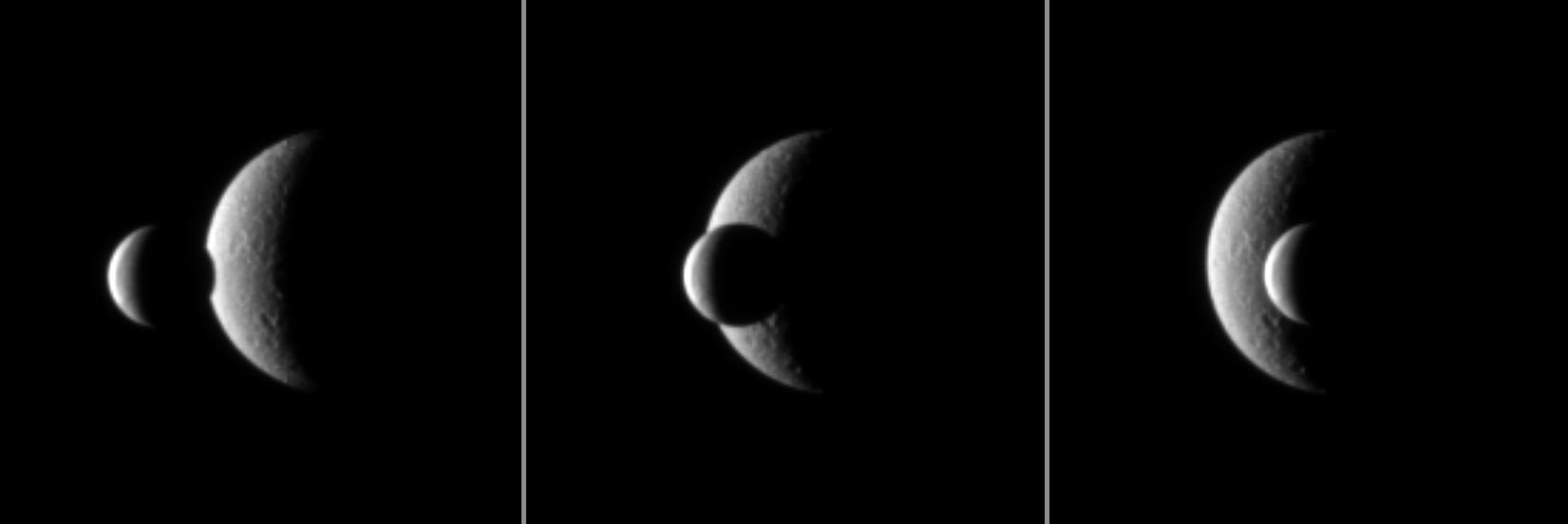Enceladus Meets Rhea

| PIA Number | PIA12538 |
|---|---|
| Language |
|
Two of Saturn's icy moons pass each other in a mutual event recorded by the Cassini spacecraft.
The smaller moon Enceladus (504 kilometers, or 313 miles across) passes in front of the larger moon Rhea (1,528 kilometers, or 949 miles across). These three images were each taken a little more than a minute apart. Mutual event observations such as this one, in which one moon passes close to or in front of another, help scientists refine their understanding of the orbits of Saturn's moons.
The view was obtained at a distance of approximately 2.3 million kilometers (1.4 million miles) from Enceladus and 2.7 million kilometers (1.7 million miles) from Rhea.
The images were taken in visible light with the Cassini spacecraft narrow-angle camera on Nov. 15, 2009. Scale in the original images was 14 kilometers (9 miles) per pixel on Enceladus and 16 kilometers (10 miles) per pixel on Rhea. The images were contrast enhanced and magnified by a factor of 3 to increase the visibility of surface features.
The Cassini-Huygens mission is a cooperative project of NASA, the European Space Agency and the Italian Space Agency. The Jet Propulsion Laboratory, a division of the California Institute of Technology in Pasadena, manages the mission for NASA's Science Mission Directorate, Washington, D.C. The Cassini orbiter and its two onboard cameras were designed, developed and assembled at JPL. The imaging operations center is based at the Space Science Institute in Boulder, Colo.
For more information about the Cassini-Huygens mission visit http://saturn.jpl.nasa.gov . The Cassini imaging team homepage is at http://ciclops.org .
Credit: NASA/JPL/Space Science Institute
